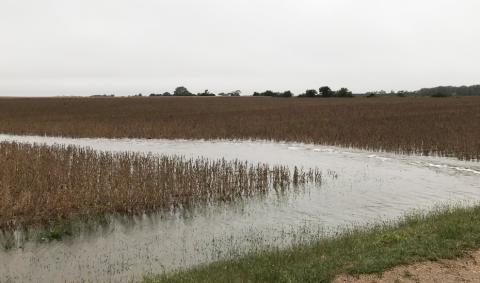Strategies to Minimize Compaction During Wet Spring Conditions
May 15, 2024
Insights on how wet field conditions affect compaction and ways to mitigate compaction when field work can't be delayed.
The Soil Health Exchange: Terrace Effects on Soil Fertility and Yield
November 13, 2023
The Soil Health Exchange team shares insights and potential solutions for a southwest Nebraska farmer who has observed a significant yield decline in a field after terraces were built in 2010.
The Soil Health Exchange: Natural Solutions to Soil Compaction — Beyond Mechanical Means and Cover Crops
October 5, 2023
Soil health experts share techniques for reducing soil compaction without the use of long-term cover crops.
Pasture and Forage Minute: Cattle Compaction in Cropland, Pasture Soil Sampling
November 16, 2022
Extension educators address concerns about cropland compaction and reduced yields from grazing crop residues and taking soil samples in pastures and hay fields.
Pasture and Forage Minute: Grazing Corn Residue for Better Crop Yields
November 23, 2021
Nebraska Extension Educator Ben Beckman explains how grazing corn residue at proper stocking rates can lead to better crop yields, plus a review on testing cornstalk bales for nutritional value.
Avoiding Harvest Compaction in Wet Soils
October 10, 2019
With wet soils in many areas and heavy harvest equipment, compaction is likely to develop, affecting crop growth in coming seasons. Taking these 10 steps can help reduce compaction this harvest.
Avoiding Compaction at Harvest
October 11, 2017
If you're worried about compacting still-wet soils this fall, these recommendations can help you avoid or reduce potential compaction and its effects on next year's yields.






